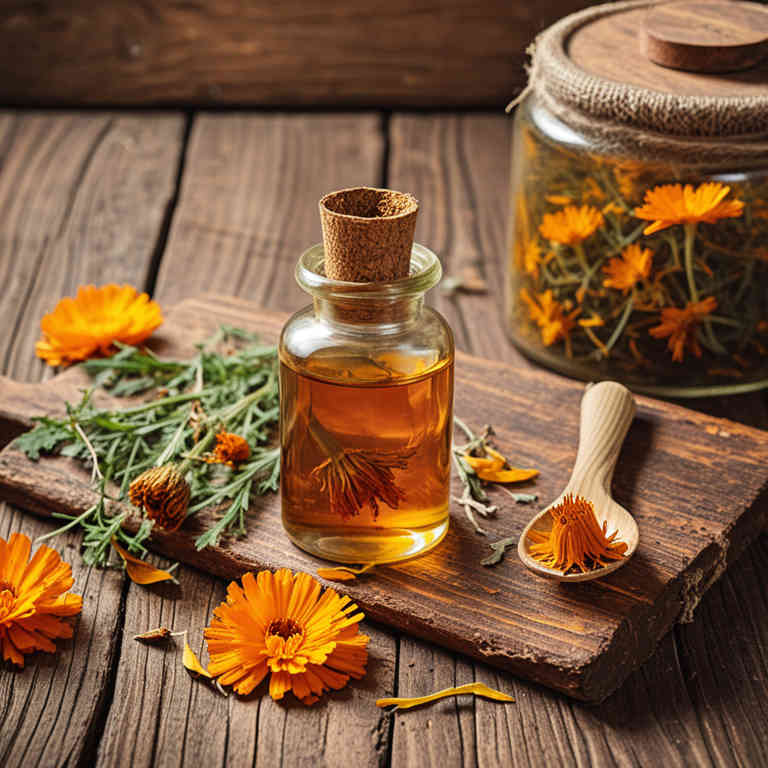Calendula officinalis tincture for medicinal use

Calendula officinalis tincture is a concentrated liquid extract made by soaking the dried flowers of the Calendula plant in alcohol.
It is commonly used in herbalism for its anti-inflammatory, antiseptic, and wound-healing properties. This preparation is often applied topically to treat skin irritations, eczema, and minor cuts. It can also be taken internally in small doses to support digestive health and reduce inflammation.
Its versatility makes it a valuable remedy in both traditional and modern herbal practices.
Uses
Calendula officinalis tincture has been used to treat various skin conditions and promote healing for centuries.
Historically, it was valued in ancient Egypt, Greece, and Rome for its anti-inflammatory and antiseptic properties. Traditionally, it was used to soothe wounds, eczema, and other dermatological issues, often prepared by infusing the flowers in alcohol. In modern times, it is still widely used in natural medicine and skincare products for its soothing and protective effects.
Its continued popularity reflects both its historical significance and its validated therapeutic benefits.
Benefits
Calendula officinalis tincture has health benefits such as promoting skin healing, reducing inflammation, and supporting wound recovery.
It is commonly used topically to treat minor burns, cuts, and skin irritations due to its antimicrobial and anti-inflammatory properties. The tincture may also help soothe digestive issues when taken internally, though it is typically used in smaller doses. Its antioxidant properties contribute to overall cellular health and may support immune function.
Calendula officinalis tincture is a versatile natural remedy that has been traditionally used for its soothing and healing effects on both the skin and internal systems.
Constituents
Calendula officinalis tincture active constituents include flavonoids, triterpenes, carotenoids, and essential oils.
These compounds contribute to its anti-inflammatory, antimicrobial, and wound-healing properties. Flavonoids help reduce inflammation and protect cells from oxidative stress. Triterpenes may support skin health and have soothing effects.
Carotenoids and essential oils provide antioxidant benefits, promoting overall wellness.
Preparation
To make Calendula officinalis tincture, first gather fresh or dried calendula flowers and ensure they are clean and free of debris.
Next, place the flowers in a glass jar and cover them completely with high-proof alcohol, such as vodka or grain alcohol. Let the mixture sit in a dark place for 4 to 6 weeks, shaking the jar occasionally to promote extraction. After the steeping period, strain the liquid through a fine mesh strainer or cheesecloth to remove the plant material.
Finally, store the tincture in a dark glass bottle away from light and heat to preserve its potency and effectiveness.
Side Effects
Calendula officinalis tincture may lead to gastrointestinal discomfort, allergic reactions, or skin irritation in some individuals.
It is derived from the flowers of the calendula plant and is commonly used for its anti-inflammatory and antimicrobial properties. While generally considered safe when used externally, internal consumption can pose risks, especially for those with known allergies to plants in the Asteraceae family. Possible side effects include nausea, vomiting, or interactions with certain medications.
It is important to consult a healthcare professional before using this preparation, particularly for prolonged periods or in high doses.